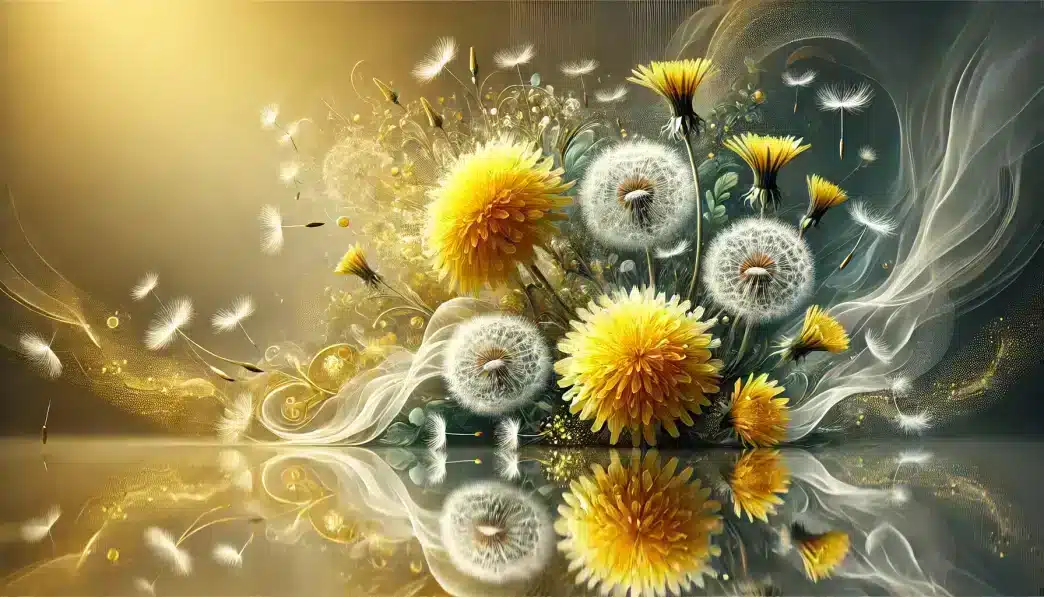What is National Dandelion Day?
National Dandelion Day is celebrated annually in the United States on April 5, honoring the resilient and versatile dandelion plant. Often dismissed as a common weed, the dandelion (Taraxacum officinale) has a rich history of medicinal, culinary, and ecological significance. This day encourages individuals to appreciate the dandelion’s unique qualities and its contributions to various cultures and ecosystems.
History and Origin
The dandelion is believed to have evolved around 30 million years ago in Eurasia. Ancient civilizations such as the Egyptians, Greeks, Romans, and Chinese recognized its medicinal properties and used it for various health benefits. European settlers introduced the plant to North America, where it quickly became widespread. Over time, dandelions have been utilized for their nutritional value, medicinal benefits, and even as a source of natural dye.
National Dandelion Day was established to shift the perception of this plant from an unwanted weed to a valuable part of nature. The celebration highlights the many ways dandelions benefit people and the environment, from providing food and medicine to supporting pollinators like bees and butterflies.
Who Celebrates National Dandelion Day?
- Gardeners and herbalists: Individuals who recognize the dandelion’s benefits in gardening and natural medicine.
- Culinary enthusiasts: Those who incorporate dandelion greens and flowers into their cooking.
- Environmentalists: Advocates who appreciate the dandelion’s role in ecosystems and its support of pollinators.
- Educators and students: Participants in educational activities that highlight the plant’s biology and cultural significance.
- Health and wellness advocates: People who use dandelions for their reported health benefits, including detoxification and digestion support.
Slogans and Themes
National Dandelion Day emphasizes themes of resilience, versatility, and the hidden value of overlooked aspects of nature. Common slogans include “Discover the Dandelion’s Delights,” encouraging exploration of the plant’s many uses; “From Weed to Wonder,” highlighting the shift in perception regarding dandelions; and “Celebrate Nature’s Survivor,” acknowledging the dandelion’s ability to thrive in diverse conditions.
Colors, Symbols, and Patterns
Colors
- Yellow: Reflecting the bright blossoms of the dandelion.
- Green: Symbolizing the plant’s lush foliage and connection to nature.
- White: Representing the dandelion’s seed heads and the idea of spreading knowledge.
Symbols
- Dandelion seed head: Emblematic of wishes, dreams, and the spread of ideas.
- Lion’s tooth: A nod to the plant’s name origin and the shape of its leaves.
- Honeybee: Representing the dandelion’s role in supporting pollinators.
Patterns
- Radiating petals: Mimicking the sun-like appearance of the dandelion flower.
- Floating seeds: Depicting the dispersal method of dandelion seeds.
- Leaf veins: Illustrating the intricate structure of dandelion leaves.
Most Used Hashtags
- #NationalDandelionDay
- #DandelionAppreciation
- #FromWeedToWonder
- #DandelionDelights
- #Nature’sSurvivor
How to Celebrate National Dandelion Day
- Culinary exploration: Prepare dishes using dandelion greens, such as salads, teas, or herbal infusions, to experience their nutritional benefits.
- Gardening activities: Learn about the role of dandelions in soil health and consider their place in your garden ecosystem.
- Educational workshops: Participate in or host sessions that teach about the plant’s history, uses, and ecological importance.
- Creative projects: Use dandelions in art, whether through photography, painting, or crafting, to capture their beauty.
- Community engagement: Organize or join local events that celebrate and educate about dandelions.
Why is National Dandelion Day Important?
National Dandelion Day serves to shift perspectives on a plant often labeled as a nuisance, highlighting its numerous benefits and cultural significance. By recognizing the dandelion’s resilience and versatility, we are reminded of the broader lessons in adaptability and the value of looking beyond surface judgments. This day encourages a deeper appreciation for the interconnectedness of nature and the hidden gems within it.
Dandelions may be small, but they play a big role in our ecosystems and history. Celebrating National Dandelion Day is a chance to acknowledge their contributions and rethink what we consider “weeds.”
Features
- Nature
